
2 minute read
2 Existing Conditions
Vegetation
The vegetation character surrounding the site is predominately native and well established with clusters of dense planting surrounding wetlands and bordering the park. The most common tree species identified on-site are Eucalyptus, Acacia and Allocasaurina. There is a strong landscape character (which is identified as dense clusters of same or similar species) in the following areas:
Acacia Sp.
Eucalyptus Sp.
Dense mixed planting surrounding wetlands.
Aquatic grasses
Melaleuca & Leptospermum Sp.
Ulmus sp.
Surfaces
The majority of the pedestrian pathways surrounding the lake are wide and constructed of compacted crushed rock. Concrete is limited to roads and parking areas with small areas of concrete used primarily for accessibility around the existing playground.
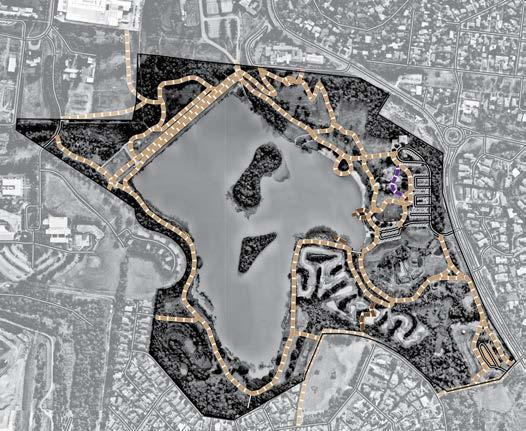

The main existing path types are as follows:
1 2 3
Compacted crushed rock
Concrete
Timber decking
Furniture
Seating, bins, shelters, drinking fountains and several barbecues are provided. Outside of this area there are occasional seats positioned below iconic shelters (positioned on the main trail surrounding the lake). There is adequate signage and wayfinding, though there is limited signage to the site perimeter. Lighting has recently been installed to the primary pedestrian path. The existing furniture, signage and lighting are as follows:
Paths with lighting
Shelters with seating
Signage (information)
Wayfinding

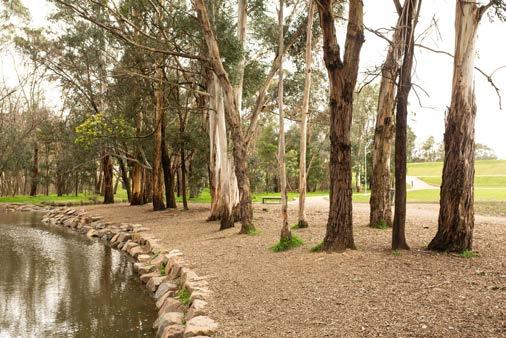
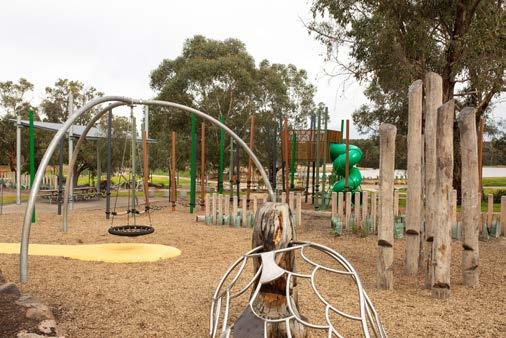


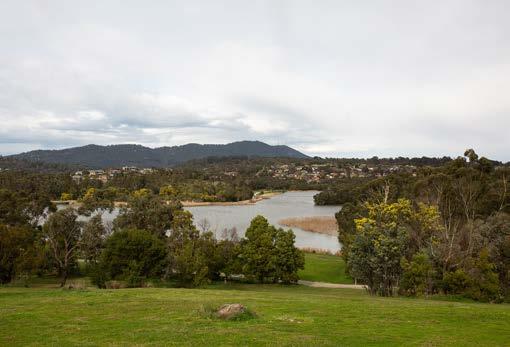
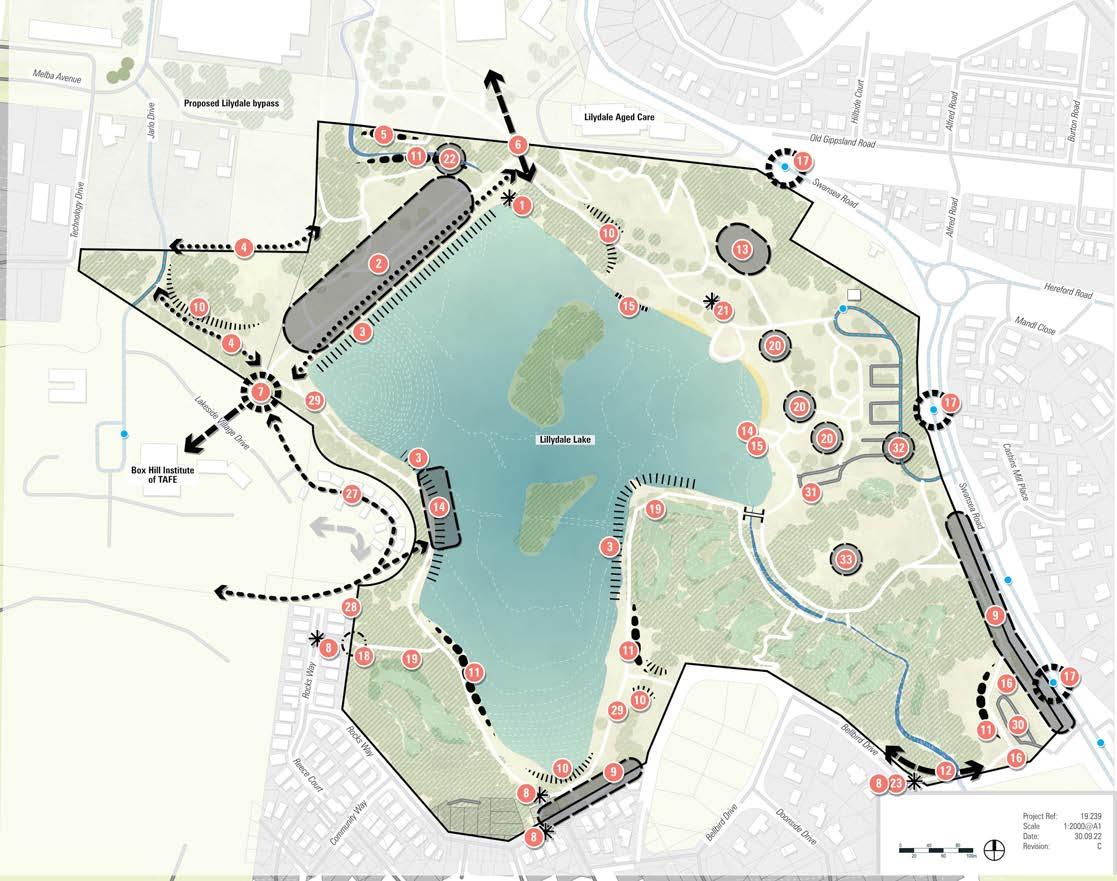
Issues
Existing fencing detracts from appreciation of existing heritage site.
Opportunities
Improve sight lines to heritage site by reviewing existing fencing
Enhance embankment with low level native/indigenous planting (subject to approval by Melbourne Water)
Improve lake interface with low level native/indigenous planting (subject to approval by Melbourne Water)
No lighting to footpath
Council carpark currently underutilised
Entrance from Box Hill Institute is not accessible for all, has limited views and wayfinding to library
No signage to park entrance
Exposure to outside uses
Existing sight lines are poor
Lighting to footpath (subject to approval from Melbourne Water where required)
Undertake arboricultural assessment of mature Elm row for health and safety
Improve car park connection and signage. Opportunity to increase awareness of the various car parks that link with the Lilydale Lake Precinct.
Improve entrance character and signage
Improve signage and wayfinding
Review planting density
Maintain annual vegetation pruning for safe view lines
Consider new wheelchair accessible picnic benches
Additional informal seating & canopy trees for use in association with new bike circuit and community event space.
Issues
No pedestrian access from Kinley development to Lillydale Lake. Limited connections for Box Hill Institute to Lillydale lake
No pedestrian access from Kinley development to Lillydale Lake. Limited connections from Box Hill Institute to Lillydale Lake.
Current shelter does not provide adequate shade
Opportunities
Option 1: DDA compliant path from future Kinley development to Lillydale Lake
Option 2: DDA compliant boardwalk from future Kinley development to Lillydale Lake
Review shelter to provide better shade and protection from the elements
Upgrade and seal existing carpark
Improve signage and access from the car park to the designated dog of leash area to the south (mound)
One-way section of main car park can cause congestion in peak times
Review carparking layout
Review and increase dog off-leash use when not in use by Melbourne Water.
Non location specific opportunities
Improve connections, wayfinding and access to Box Hill Institute, Lilydale town centre and rail station, Olinda Creek, Lilydale-Warburton Rail Trail and Carrum-Warburton Trail (including information indicating directions and distances to key destinations).
Incorporate interpretative signage / information on indigenous cultural heritage close to Olinda Creek
Incorporate interpretation of indigenous cultural heritage in consultation the local indigenous community.
Review DDA access and facilities at Lillydale Lake.
Review seating spacing around the lake to ensure they are adequately spaced for older / less mobile participants.



